| | Description and behavior | Damage | Control of damage | Repellents | Frightening devices | Integrated pest management | Removal with traps | Registered products
Starlings were brought to North America from Europe in the late 1890’s. Since that time, they have greatly increased in number and have spread across most of the North American continent.
Description and Behavior
Adult starlings are chunky birds, about the size of robins. In summer, their plumage is glossy purple-green with numerous white markings; the bill is yellow. During the winter, the back feathers are much darker and edged in light brown. The bill also darkens to bluish-black. The color is identical for both sexes. The starling's most prominent feature is an unusually short tail.
Favorite foods include fruits and seeds, both wild and cultivated. Insects and other invertebrates make up about half the diet, especially during the spring breeding season. During the fall months, starlings tend to vacate the harsh northern climate of Alberta and travel south. Consequently, wintering flocks often concentrate in great numbers at feedlots and livestock shelters.
Starlings nest in holes or cavities almost anywhere, including trees, birdhouses, buildings or rock piles. Females lay 4 to 7 eggs, which hatch after 11 to 13 days of incubation. Young birds leave the nest when they are about three weeks old. Both parents build the nest and care for the eggs and hatchings. Two broods each season are not uncommon.
Damage
In Alberta, starlings can be a nuisance to livestock producers. They consume and contaminate livestock feed and water. They also "whitewash" buildings, facilities and animals with their droppings. In winter, flocks of up to 2,000 birds can consume 1 to 2 tonnes of feed in a month and can contaminate or spoil an additional 500 to 1,000 kg of feed. Worse still, starlings may selectively eat the high-protein portion of protein-supplemented livestock feed.
Starlings can also transfer many diseases between livestock animals, particularly swine.
Control of Damage
Starlings are attracted to livestock operations by available food, water and shelter for nesting and roosting. Prevention can dramatically reduce or eliminate problems with starlings.
Prevention in feedlots
- clean up spilled grain
- use bird-proof facilities for storing grain (properly sealed bins and flip-top feeders)
- drain or fill unnecessary water pools and puddles (starlings are especially attracted to water). Make livestock waterers unavailable or less attractive to starlings where feasible. Lower the water level, so the birds cannot drink when perched or standing on the waterer (see Figure 1.).
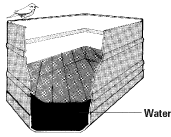
Figure 1. Keep water levels low
Exclusion in sheltered areas
- where starlings are a problem inside buildings, close all openings with a diameter larger than 2.5 cm (1 inch)
- suspend clear heavy plastic strips 25 cm (10 inches) wide from open doorways where continuous traffic prevents the use of doors. The strips should be placed 5 cm (2 inches) apart and should nearly touch the ground.
- eliminate roosting areas by placing boards at 45ø over ledges (see Figure 2).
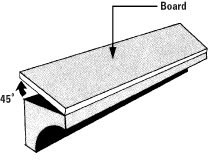
Figure 2. Eliminate roosting areas
Repellents
Repellents like Shoo, Tacky Toes and Bird-X Bird Proof paste applied to tape or clean surfaces will keep starlings from roosting or perching on ledges and rafters. One advantage to these soft, paste-like materials is that they can be used almost anywhere, although they do not work well in dusty areas.
"Porcupine Quills" consist of several parallel rows of 7.5 cm (3 inch) stiff wire attached to a base and can be tacked or taped to ledges and rafters (see Figure 3). Starlings only need a 2.5 cm (1 inch) space to roost or perch, so careful placement is needed to achieve satisfactory results.
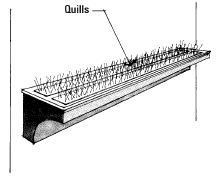
Figure 3. Stiff wire can repel starlings
Frightening Devices
There are many types of frightening or scaring devices. Some work well under certain conditions, but most are costly, time-consuming and of questionable benefit. Frightening devices work best when used before problems start. They are more effective when used in conjunction with other bird control techniques.
Available devices include recorded distress or alarm calls, gas-operated exploders (Zon guns), battery-operated alarms (Av-alarm), lights and glittering objects (predator eye balloon). Propane activated cannons have been used for years to successfully deter birds entering many different crops, and these cannons will provide short-term control.
Probably the most effective scare device is a .22 caliber bullet shot directly into or over a flock (if safety and local bylaws permit). The report of the bullet may be sufficient to drive birds away. "Bird shot" or "dust-load" are safe and effective .22 cartridges for starling control.
Integrated Pest Management
Using a variety of different techniques at the same time gives the best results. Reliance upon one technique will often fall short, since starlings soon learn to avoid specific areas or devices.
Removal with Traps
Trapping and removing starlings can be successful at locations where the birds are a year-round problem, where they are few in number or where other techniques are ineffective or cannot be used.
Food-baited funnel traps are designed to capture starlings alive (see Figures 4). A pre-bait offer of grain or other food placed outside but near the trap for four to six days will condition the birds to the trap.
After a week, place the bait inside the trap with a supply of water. Funnel traps work best in feedlots, livestock shelters or grain storage areas. Place traps in an open area at least three metres from farm buildings or areas of human activity.
Registered Products
Avitrol bait is a ready-to-use pesticide containing a chemical repellent and ground corn or other cereal. However, Avitrol is a restricted compound and can only be used under the supervision of licensed pesticide applicators. After one or two feedings, Avitrol produces abnormal behaviour and vocalization in birds. Abnormal sounds and distress calls made by affected birds frighten away others in the flock.
In feedlots or farm buildings, place Avitrol bait on platforms large enough to accommodate 20 birds (60 cm x 60 cm), elevate to 1.5 m and cover with a roof 30 cm above the platform. A pre-bait offering of untreated bait such as ground corn should be placed on the platform for up to seven days to condition birds to the bait. Thereafter, the pre-bait should be replaced with Avitrol bait. Baiting can continue for up to two weeks.
Bait platforms should be placed in areas inaccessible to both wild and domestic birds as well as animals to reduce the chance of accidentally poisoning them.
Post warning notices in treated areas until completion of treatment period.
Remove dead birds immediately after the bird problem is eliminated and destroy them by burning.
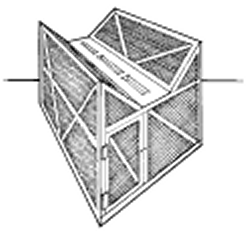 | A. Assembled trap. Use 2.5 cm mesh. |
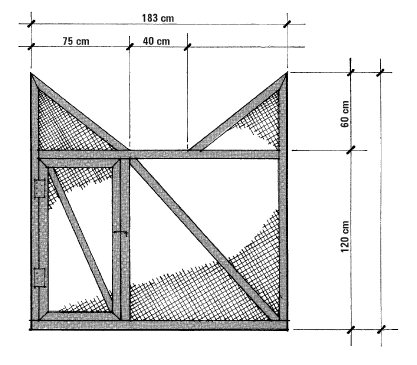 | B. Front Panel |
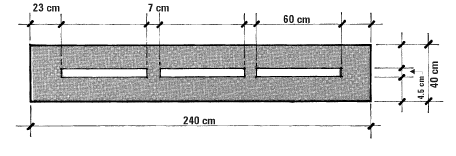 | C. Entrance panel slots must be exactly 4.5 cm wide. To wire panel to trap, drill 1.25 cm holes along edge as required. |
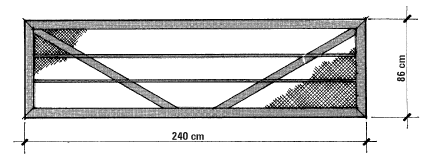 | D. Top panel (make two) |
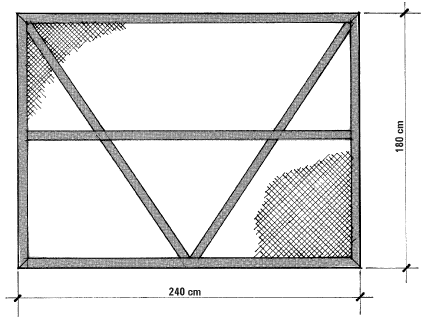 | E. Side panel (make two) |
Figure 4. Starling trap to capture birds alive, drawing sections A to E.
Prepared by:
Alberta Agriculture and Rural Development
More information, contact:
Alberta Ag-Info Centre
Call toll-free: 310-FARM (3276)
Source: Agdex 685-6. Revised January 2015. |
|